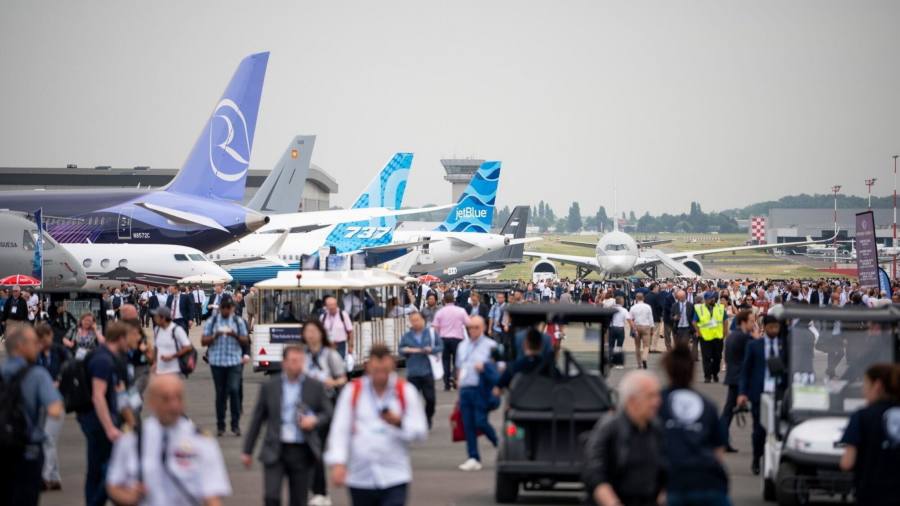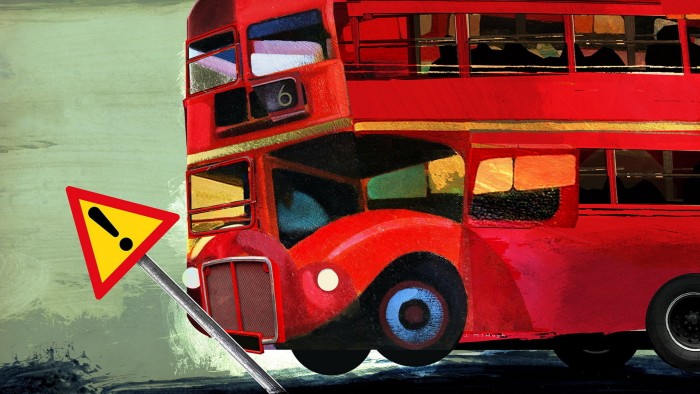
Receive free Airlines updates
We’ll send you a myFT Daily Digest email rounding up the latest Airlines news every morning.
Last week the Paris Air Show recorded the highest level of firm aircraft orders in 15 years. Yes, the majority of those came from two Indian airlines with deliveries planned over the course of the next decade. But the bullish sentiment that drove those orders seems to be shared across the globe as passengers shrug off soaring air fares, record inflation and concern over potential recession to book their holidays.
After a dire three years, airline executives are revelling in bumper bookings and in the flying public’s apparent tolerance for ever higher fares.
But for how much longer? Not much, would be my guess. According to data cited by the Airports Council International Europe, global airfares in May were about 36 per cent higher than in 2019. Hopper, the US travel app, estimates that fares from the US to Europe are up 23 per cent on 2019. Virgin Atlantic says north Atlantic fares on its routes are up 35 per cent over the same period.
And still passengers are flying. The International Air Transport Association forecasts that passenger traffic will just pip 2019 levels next year, despite the headwinds of higher fares, inflation and economic uncertainty.
According to Ed Bastian, chief executive of Delta Air Lines, this is more than so-called revenge travel after years of Covid-19 restrictions. “We’re in a multiyear recovery from the pandemic that’s going to be well above anything anyone expects,” he quipped in April.
In part, the higher fares are driven by a lack of capacity, with supply chain issues hitting aircraft deliveries and maintenance. But the total costs of travel, including hotels, are also rising and anyone betting that passengers have become immune to price might be taking a pretty big risk.
Predicting how consumers will behave has become a lot more complicated post-pandemic, say aviation planners. Past forecasts have been able to exploit decades of data detailing the so-called price elasticity of demand — in essence, the connection between the level of air fares, wider economic conditions and propensity to travel, according to one forecaster. But “those assumptions were based on a market that evolved in one direction, which has been that tickets were getting steadily cheaper,” he says. That is no longer the case.
“What happens when [Covid] savings are gone, and if unemployment is higher? No one knows,” says Rob Morris, head of global consultancy at Ascend by Cirium.
Moreover, some airlines have taken advantage of the post-Covid mismatch in supply and demand to squeeze even more revenue from passengers while offering less, making the true cost of flying less transparent and increasing the hassle of travel. No longer is a cabin bag included in the basic fare of many airlines — whether low cost or legacy carriers.
And if you don’t pay for seat allocation, you may find your companion sitting at the far end of the aircraft — even if you are surrounded by empty seats, as I was on a recent trip to Dublin. This so-called drip pricing, used in many leisure industries, is now under government scrutiny in the UK. If the government feels compelled to act, it is surely a sign that consumers are reaching their limits.
Other lights are flashing. Hopper says the number of price checks in advance of booking has risen by between 25 and 50 per cent in the first quarter of 2023 versus 2019. More travellers are also looking at flying on Monday to Wednesday, when fares tend to be cheaper.
“That tells me the desire to travel is still there, but there is also pressure on wallets,” says Hayley Berg, Hopper’s lead economist.
Air freight, often a bellwether for passenger traffic, is also slowing. Marie Owens Thomsen, chief economist at Iata, believes current demand growth may slow in the near future.
“2023 has been something of a sweet spot for aviation,” she told me. “People have incomes and that is more important than the fact that purchasing power is diminishing,” she said. “I would put an end point to that when unemployment begins to rise again. That could happen towards the end of the year.”
Airlines may be riding high now, but they know the risks. Even Delta has trimmed back planned capacity on transatlantic routes from September as a precaution, which also conveniently helps to buoy fares. Virgin Atlantic’s chief commercial officer, Juha Järvinen, says he has not seen any sign of slowing demand. Yet the scope to increase fares may already have hit its limits. “If there is a growing cost of living crisis . . . that will have an impact on people’s spending and we need to be prepared to adjust.”





